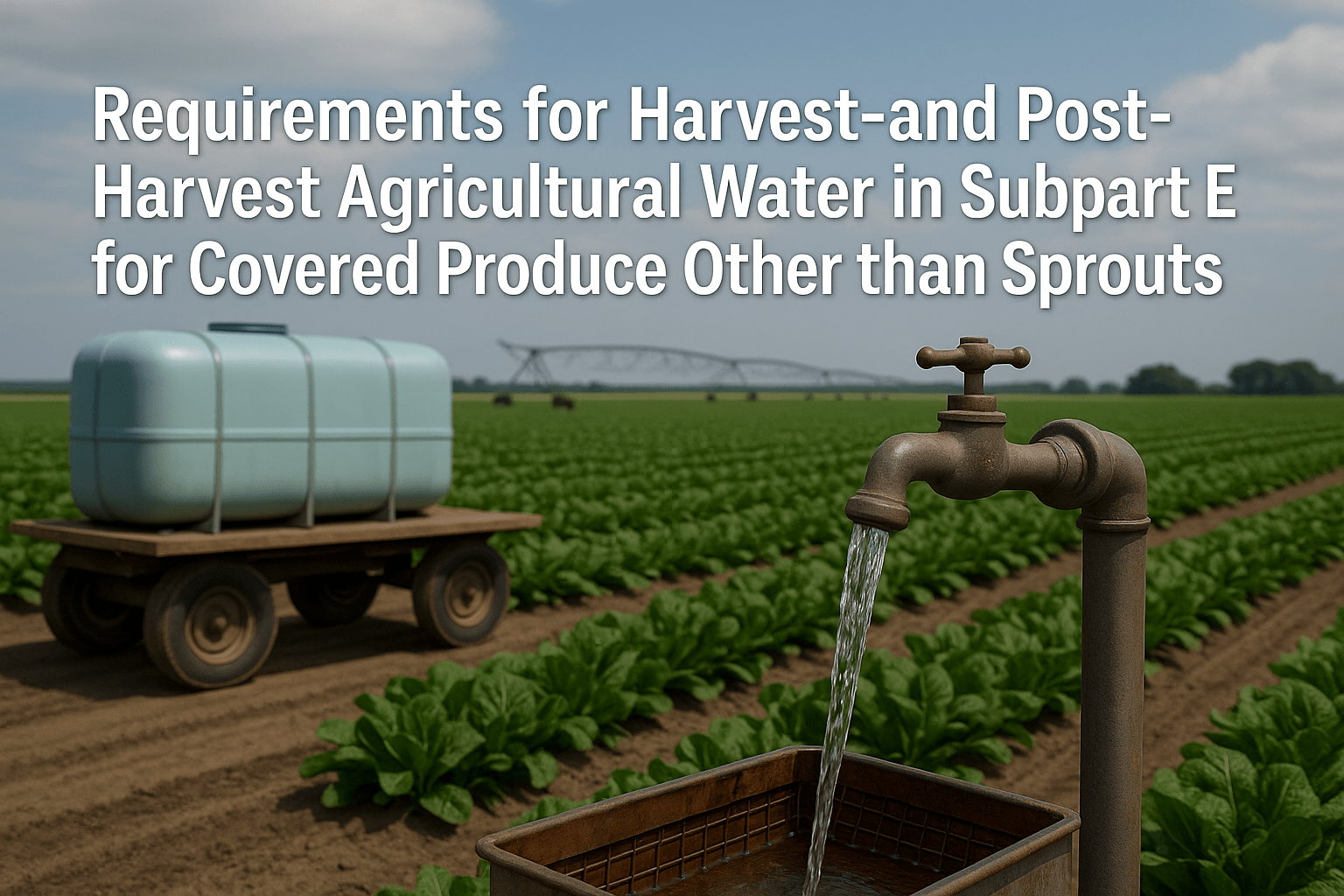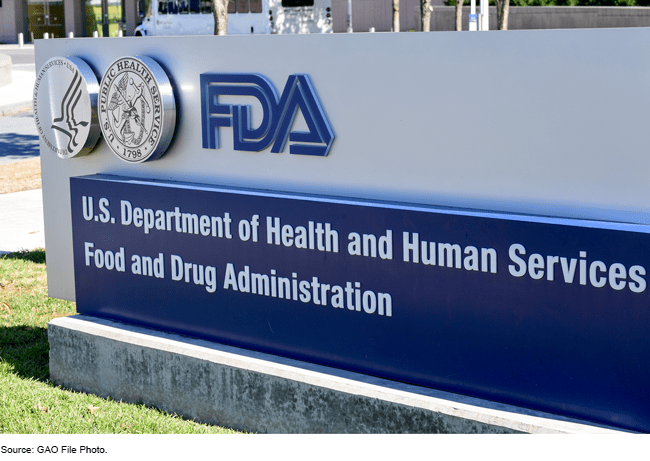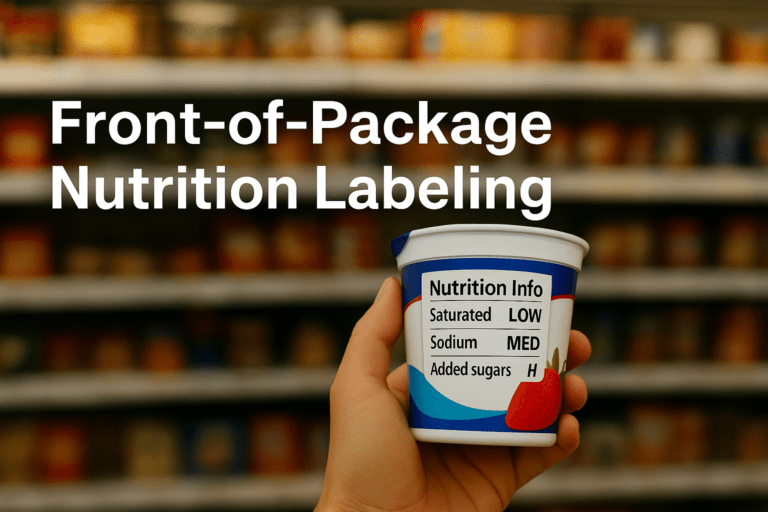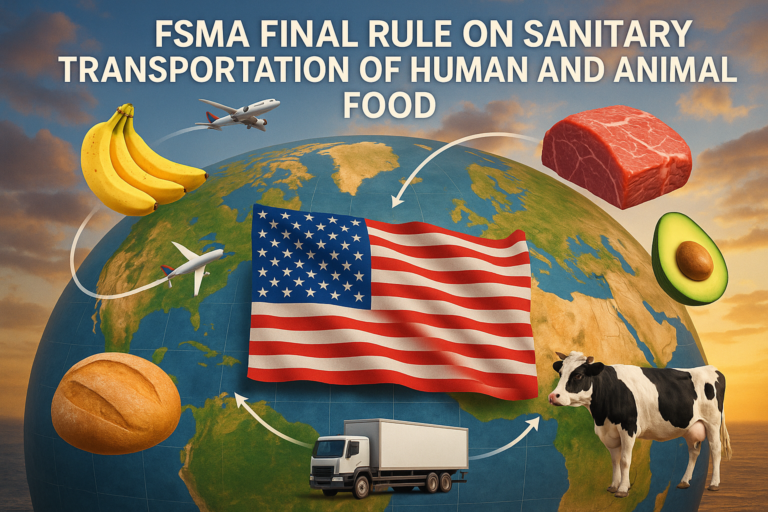Updated to Reflect May 6, 2024 Rule Changes
End of Intended Enforcement Discretion: January 26, 2023 – 2025
The FDA announced in July 2022 that it would phase out its enforcement discretion for harvest and post-harvest agricultural water requirements under Subpart E of the Produce Safety Rule. This means enforcement of these requirements began on:
- January 26, 2023 – for large farms
- January 26, 2024 – for small businesses
- January 26, 2025 – for very small businesses
Although the May 6, 2024 final rule revised pre-harvest agricultural water requirements, the harvest and post-harvest water requirements remain unchanged. However, the rule reorganized Subpart E, which means some regulatory sections have moved.
What Is Agricultural Water?
Agricultural water refers to water that comes into contact with produce or food contact surfaces during growing, harvesting, packing, or holding.
- Harvest and Post-Harvest Water: Used in activities like washing, cooling, making ice, transport, or handwashing after harvest.
- Pre-Harvest Water: Used during growing, e.g., for irrigation or pesticide application.
See the FSMA Final Rule on Pre-Harvest Agricultural Water for details on pre-harvest water requirements.
Who Must Follow These Requirements?
Any covered farm that uses agricultural water in a way that contacts covered produce or food contact surfaces must comply with Subpart E.
Key Compliance Dates
Farm Size | Enforcement Begins |
All other businesses | Jan 26, 2023 |
Small businesses | Jan 26, 2024 |
Very small businesses | Jan 26, 2025 |
What Will FDA Inspections Look Like?
During the first year of enforcement for each farm size, the FDA is taking an educational approach—providing:
- On-farm readiness reviews
- Technical assistance
- Training for farms and regulators
This mirrors the FDA’s approach with other FSMA rules.
Summary of Key Requirements Under Subpart E
All agricultural water used for harvest/post-harvest must be safe and of adequate sanitary quality for its intended use.
Inspection & Maintenance Requirements
Farms must:
- Inspect water systems under their control to spot conditions that might lead to contamination.
- Maintain those systems to prevent contamination risks.
Microbial Quality Standards
Water used for harvest or post-harvest activities must not contain detectable generic E. coli in 100 mL.
Untreated surface water is prohibited for these uses.
What If the Water Fails to Meet Standards?
If water is not safe or doesn’t meet microbial standards, the farm must:
- Immediately stop using the water.
- Correct the issue by either:
- Re-inspecting and fixing the water system, or
- Treating the water as per §112.46.
Testing Requirements
No testing required if:
- Water comes from a Public Water System, with valid certificates, or
- Water is treated according to §112.46.
For untreated ground water, farms must:
- Test at least four times initially (in one year or one growing season)
- Annually thereafter
- If a sample fails, return to four times per season until compliance is shown
Water testing can be done by:
- The farm itself
- A contracted third party
- Another farm (if data accurately reflects the water used)
How to Test the Water
Samples must be aseptically collected and tested using:
- EPA Method 1603, or
- Another equivalent, scientifically valid method with equal accuracy, precision, and sensitivity
See the FDA’s list of Equivalent Testing Methodologies for approved alternatives.
Water Management and Monitoring
Farms must:
- Follow water change schedules for recirculated or reused water
- Visually monitor for buildup of organic material (e.g., soil, debris)
- Control water temperature to reduce the risk of microbial infiltration
Treating Agricultural Water
Treatment methods may include:
- Physical treatments
- EPA-registered antimicrobial products
- Other scientifically validated methods
Treatment must be:
- Effective and reliable
- Consistently monitored to ensure water meets safety standards
Recordkeeping Requirements
Farms must keep records of:
- Water system inspections
- Test results and methods used
- Corrective actions taken
- Water treatment activities
- Public water system certificates (if applicable)




